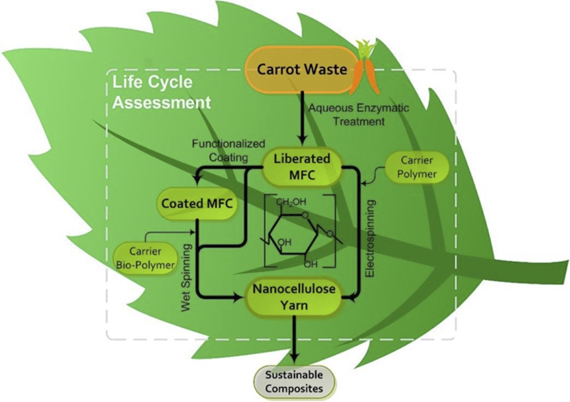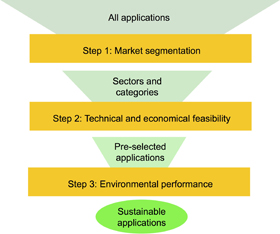NanoCelluComp
The overall aim of the FP 7 project NanoCelluComp was to develop a technology to utilise the high mechanical performance of cellulose nanofibres, obtained from food processing waste streams, for the manufacture of 100% bio-derived high performance composite materials that will replace glass and carbon fibre reinforced plastics.

The role of Empa was to prove the sustainability of the newly developed processes and materials, compared to existing materials. In this project five industries and six research institutes from five countries in Europe collaborated.
Additionally we developed a Multi-perspective application selection method in order to support researchers and industrial practitioners alike in identifying sustainable application fields for new materials under development. This is achieved through combining and assessing technical, economic and environmental criteria covering the entire life cycle of an application.
Publications
Piccinno F., Hischier R. , Seeger St. ,Som C., 2015: Life Cycle Assessment of a New Technology To Extract, Functionalize and Orient Cellulose Nanofibers from Food Waste, ACS Sustainable Chem. Eng. 2015, 3, 1047−1055 (pdf)
Piccinno F. , Hischier R. , Saba A., Mitrano D., Seeger St., Som C., 2016: Multi-perspective application selection: a method to identify sustainable applications for new materials using the example of cellulose nanofiber reinforced composites; Journal of Cleaner Production 112 (20 Jan 2016) 1199-1210 (pdf)
Piccinno F., Hischier R. , Seeger St. ,Som C., submitted: From laboratory to industrial scale: scale-up calculations for chemical processes in life cycle assessment studies; Journal of Cleaner Production

This project has received funding from the European Union’s Seventh Framework Programme for research, technological development and demonstration under grant agreement Number 263017.
Claudia Som
Empa
Technology & Society Laboratory
Lerchenfeldstrasse 5
CH-9014 St. Gallen
Tel.: +41 58 765 76 92
claudia.som@empa.ch
-
Share

